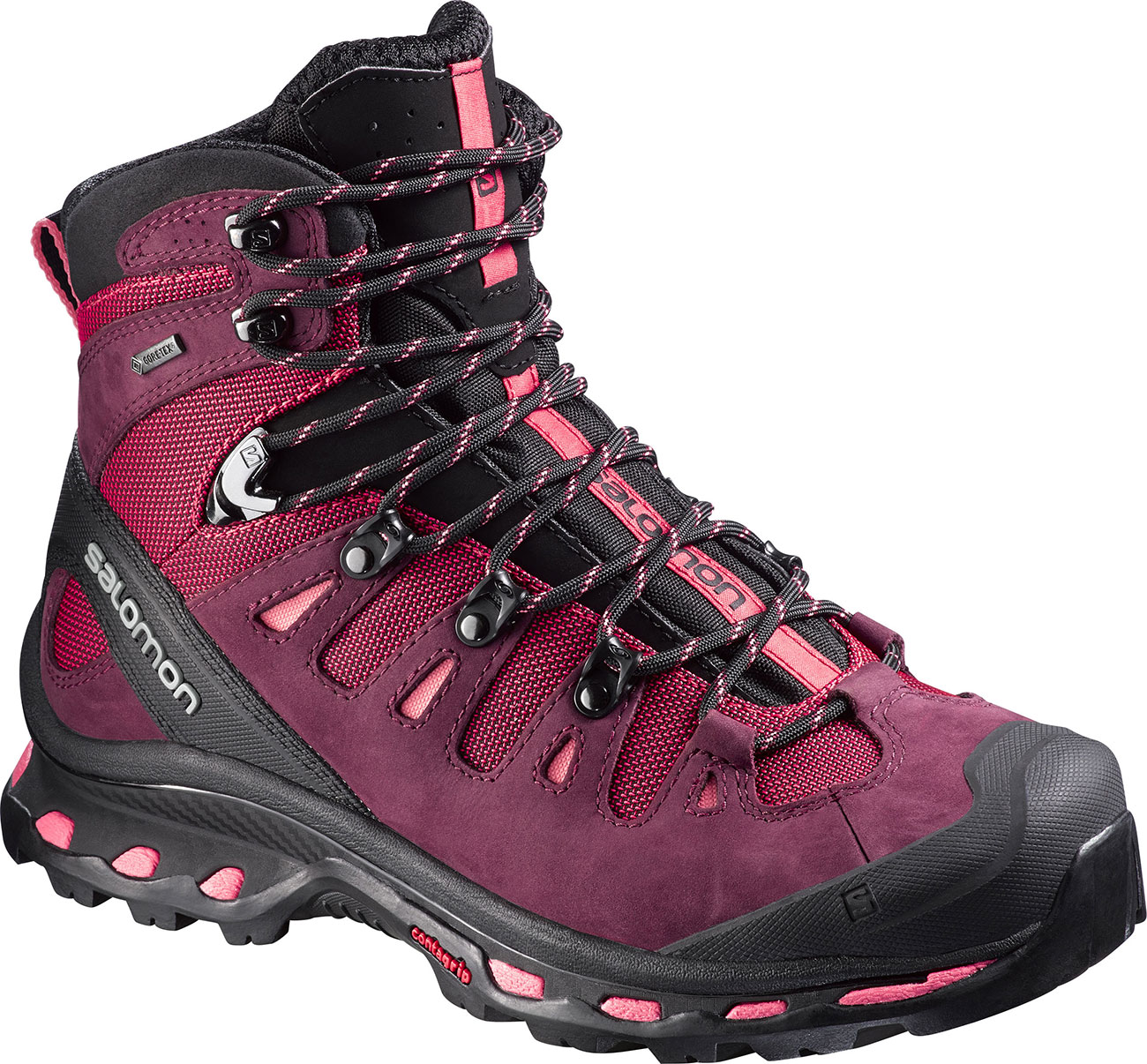
It is also a reliable choice for a boot that will hold up to extended wear and tear on the trail while providing the needed protection for heavily forested trails or frequent creek crossings. Any backpacking guide will agree that in the end the most important aspect of a boot is how it feels and there were no complaints from testers about this boot. Testers recommend this boot for longer backpacking trips and people in boots on a regular basis due to their comfortable fit, great protection, and surprisingly light feel. Based on looks, this seems fairly surprising but once actually wearing them testers agreed that they had a lighter feel than expected and didn’t notice the weight of them even after long days on the trail. At 2 lbs, 9 ounces, this boot is the second lightest boot out of the five that were tested. However, yet again testers were surprised by how it feels much more like a mid-weight hiking boot rather than a clunky old-school backpacking boot. The Quest 4D 3, just like its predecessor, doesn’t look like a lightweight boot. The construction of the upper material is made out of nubuck leather and synthetic material that provides plenty of protection for normal backpacking use and has a Gore-Tex liner to ensure the best in waterproof breathability. With a thick and burly sole, testers barely felt any rough debris that they were hiking over. The one disadvantage of this high collar is that it felt a bit more uncomfortable to testers particularly when hiking downhill and the leg pressed up against the back of the boot. The boot has a high collar around the top of the ankle which provides more protection from dirt or debris entering through the back of the boot. It has a durable feel to it and throughout testing, there were no signs of durability issues. The Salomon Quest 4D 3 scored an eight out of ten in the category of protection. The boots held up well to plenty of use over a season of testing and testers were confident that the soles of the boot would hold up for many more seasons to come. In loose rock and soil, the boots felt secure and gripped well in wet conditions as well as on dry rock. Like its predecessor, the Quest 4D 3 has a rugged outsole made of Contragrip but the sole pattern on the 3 is a more aggressive lug pattern. The tread pattern on the Quest 4D 3 is the main noticeable difference from the previous model of the Quest 4D II. Testers did notice that the provided insole was fairly flimsy and didn’t provide as much support compared to the more rigid insole of other boots, such as the Oboz Windriver III. On more rocky terrain testers felt confident scrambling around with a heavy pack due to the support of this boot and never had any issues with twisting an ankle. The boot has a high back heel which provides plenty of support around the ankles. The sole of the boot is particularly wide which provides a better platform for more stability. Salomon uses two different midsole constructions in the Quest 4D 3 to create a boot that feels supportive and stable on a variety of terrains. All testers agreed that Salomon successfully made a boot that feels more like a comfortable glove than footwear that one dreads putting on at the start of a long day on the trail.

This boot also uses a lacing system with a locking eyelet between the forefoot and ankle eyelets that allows for precise customization of fit so that the laces can be tight around the toes and loose around the heel or vice versa depending on preference. Compared to all the other boots in this test, testers really noticed how much more room there was in the boot so that even after many long days of hiking, there weren’t any problems with rubbing or blisters. This boot really stands out from others in the test by how roomy it is in the toe box. This boot uses plenty of cushioning to provide all-day comfort that makes this a great choice for trips where a comfortable boot is the highest priority.

Testers loved the feel of the Quest 4D 3 from initial impressions trying it on at a trailhead parking lot, all the way to the end of a multi-day backpacking trip.


 0 kommentar(er)
0 kommentar(er)
